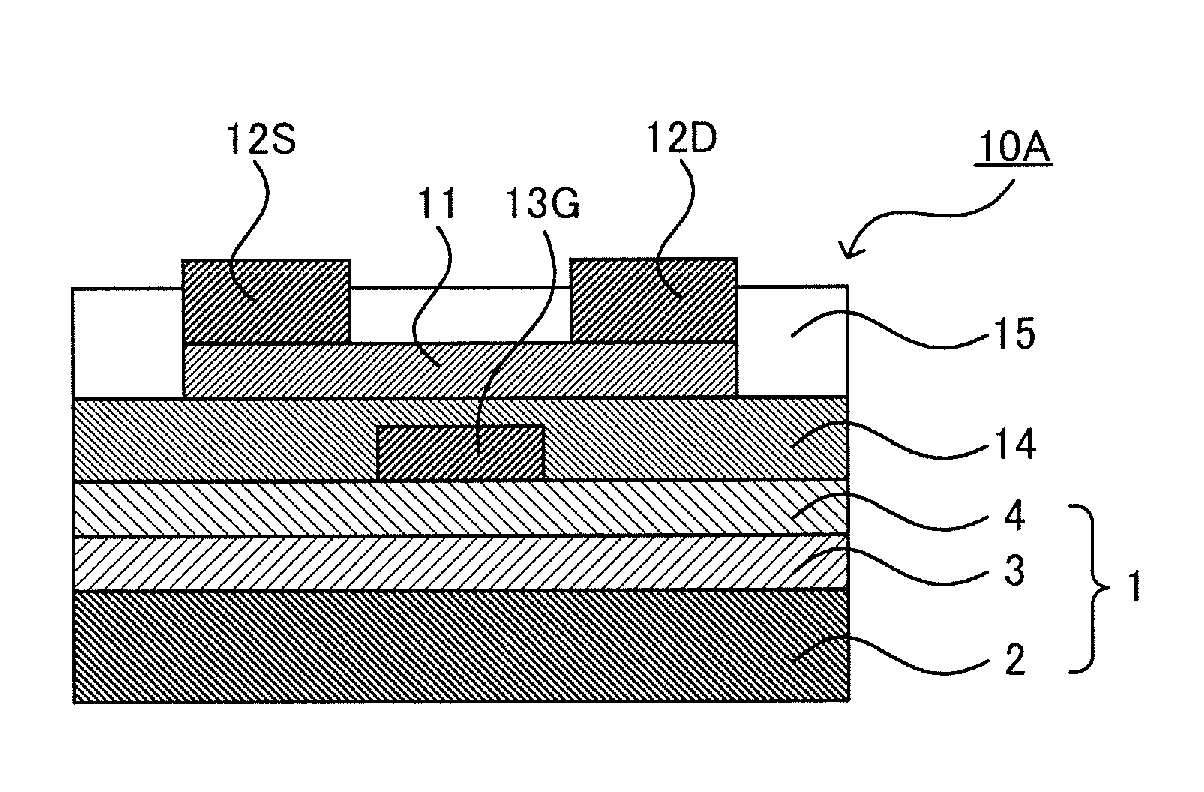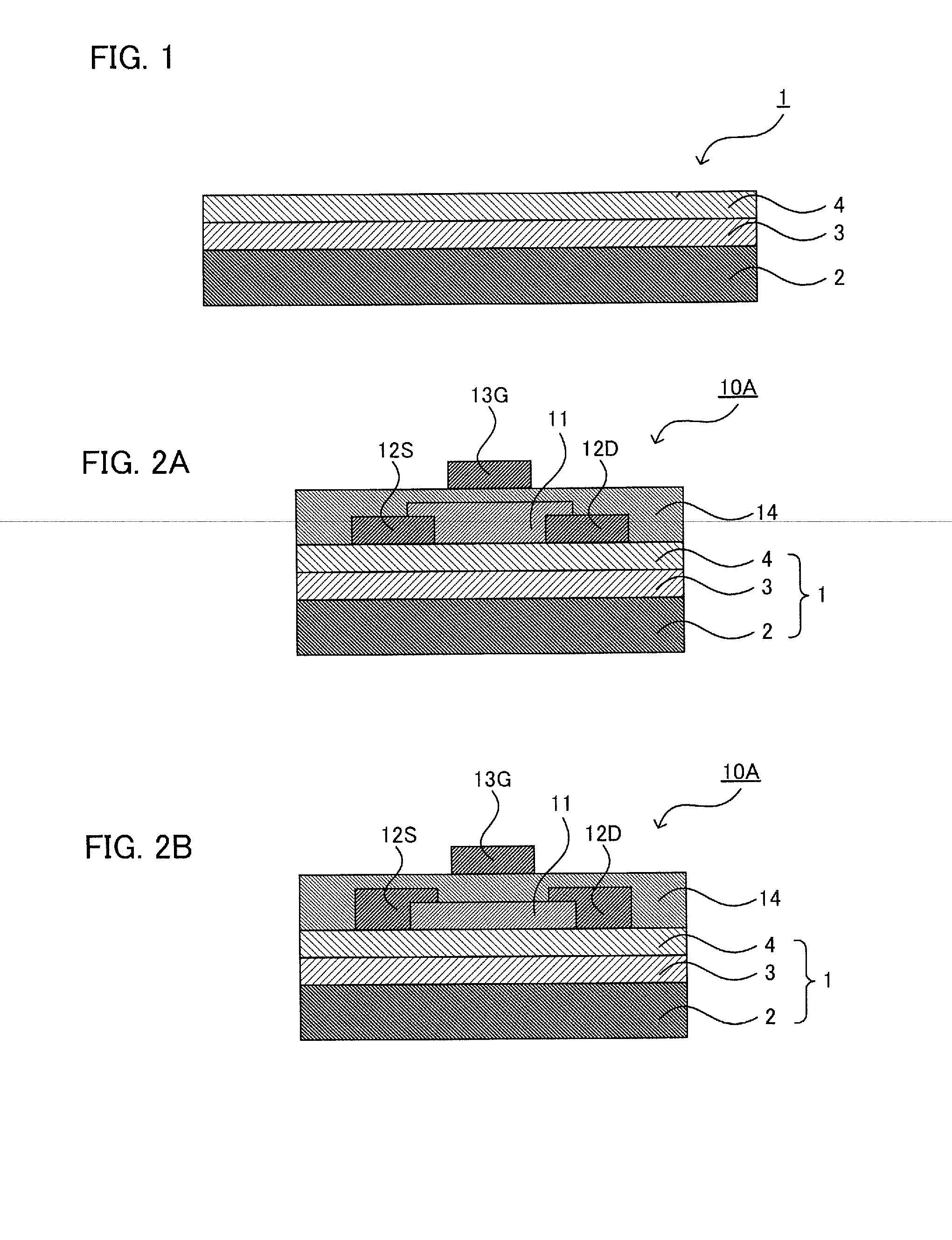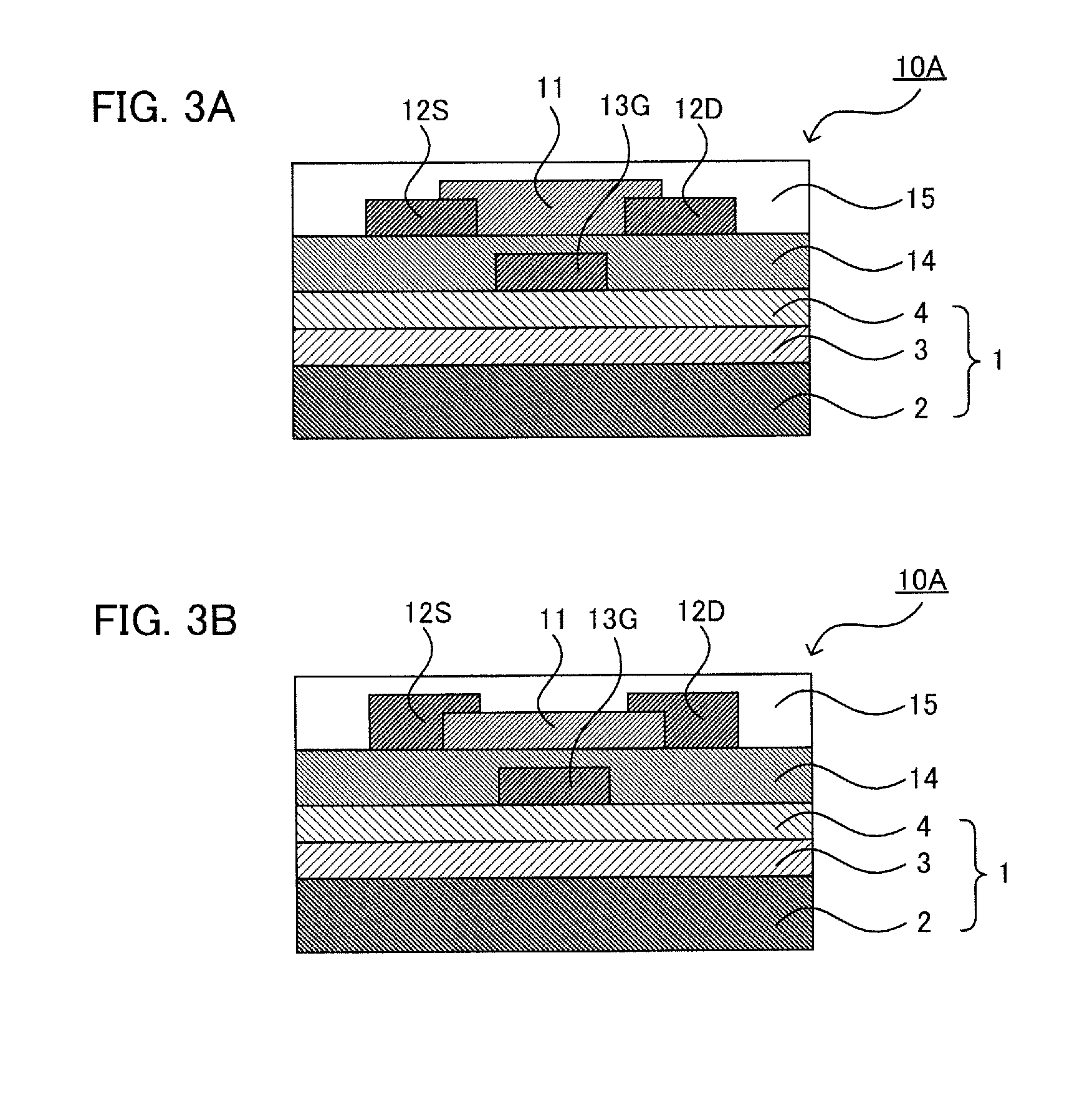Substrate for flexible device, thin film transistor substrate for flexible device, flexible device, substrate for thin film element, thin film element, thin film transistor, method for manufacturing substrate for thin film element, method for manufacturing thin film element, and method for manufacturing thin film transistor
a flexible device and substrate technology, applied in the direction of synthetic resin layered products, coatings, chemistry apparatus and processes, etc., can solve the problems of surface irregularities, deterioration of surface irregularities, etc., to prevent the occurrence of detachment or cracking of tft, improve the wettability of a polyimide resin composition to a metal base material, and improve the electrical performance of tft
- Summary
- Abstract
- Description
- Claims
- Application Information
AI Technical Summary
Benefits of technology
Problems solved by technology
Method used
Image
Examples
first embodiment
(I) First Embodiment
[0353]The first embodiment of the method for manufacturing a substrate for a thin film element of the present invention comprises steps of: a metal base material surface treatment step of subjecting a metal base material to a chemical treatment, and an insulating layer forming step of applying a polyimide resin composition on the metal base material and thereby forming an insulating layer, and is characterized in that the surface roughness Ra of the insulating layer is 30 nm or less.
[0354]The method for manufacturing a substrate for a thin film element of the present invention will be described with reference to the attached drawings.
[0355]FIG. 11A to FIG. 11C are process flow diagrams showing an example of the method for manufacturing the substrate for a thin film element of the present invention. First, as shown in FIG. 11A, the surface of the metal base material 52 is washed with a chemical (not depicted) (metal base material surface treatment step), and then ...
second embodiment
(II) Second Embodiment
[0461]The second embodiment of the method for manufacturing a substrate for a thin film element of the present invention comprises steps of: a degassing step of degassing a polyimide resin composition so that the relative dissolved oxygen saturation calculated by a method described below is adjusted to 95% or less; and an insulating layer forming step of applying the polyimide resin composition on the metal base material and thereby forming an insulating layer, and is characterized in that the surface roughness Ra of the insulating layer is 30 nm or less.
[0462]
[0463]First, using a dissolved oxygen-saturated solvent prepared by bubbling air for 30 minutes or more into the solvent included in the polyimide resin composition, calibration of a dissolved oxygen meter is performed such that the measured value of the dissolved oxygen content of the above-mentioned solvent which contains no dissolved oxygen is designated as 0, and the measured value of the dissolved ox...
examples
[0524]Hereinafter, the present invention will be specifically described by way of Examples and Comparative Examples.
PUM
| Property | Measurement | Unit |
|---|---|---|
| Fraction | aaaaa | aaaaa |
| Fraction | aaaaa | aaaaa |
| Time | aaaaa | aaaaa |
Abstract
Description
Claims
Application Information
 Login to View More
Login to View More - R&D
- Intellectual Property
- Life Sciences
- Materials
- Tech Scout
- Unparalleled Data Quality
- Higher Quality Content
- 60% Fewer Hallucinations
Browse by: Latest US Patents, China's latest patents, Technical Efficacy Thesaurus, Application Domain, Technology Topic, Popular Technical Reports.
© 2025 PatSnap. All rights reserved.Legal|Privacy policy|Modern Slavery Act Transparency Statement|Sitemap|About US| Contact US: help@patsnap.com



